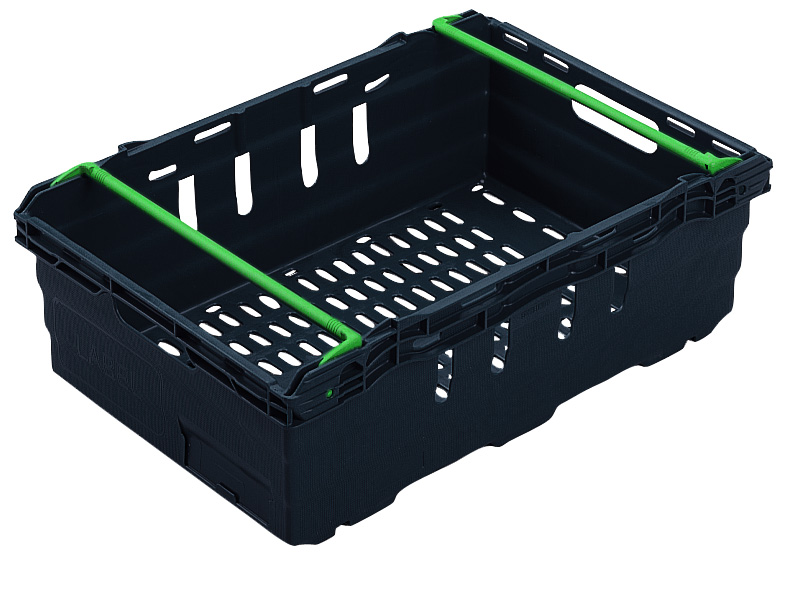With 2019’s planting season underway, the thought of harvest may seem a long way off. Yet, as with most things in life: preparation is key. There are many factors within viticulture that are beyond our control, but making considered decisions about equipment, efficiency and our ecological impacts allows us to prepare sufficiently for anything Mother Nature may throw at us.
A vital consideration is determining how you’ll get your freshly harvested grapes to their winery destination – which style and size of picking crate will you use? For a simple picking crate, there are a surprising amount of aspects which should be contemplated from size, ease of handling and load capacity to manoeuvrability, stacking ability and ease of cleaning. The ultimate aim is to transport your fruit as quickly and safely as possible with minimum damage to the grapes and with maximum efficiency.
There are two main types of picking crate available: small, handheld crates which are positioned at intervals along the vineyard rows and larger containers which are situated at the ends of rows. The smaller crates are useful for those with limited access to forklifts or quadbikes and trailers. Due to these being lifted by hand, it is important to consider manual handling techniques. You may initially think that the larger the crate, the more fruit you can fit in and the quicker you’ll be able to transport the grapes, however, if the crate is too large, (above 20kg load capacity) you not only risk the quality of the fruit being compromised by compression, but also encounter the risk of injuring your workforce through excessive weight lifting. Especially as each small crate needs to be individually tipped either into a larger container or straight into the press.
Schoeller Allibert’s Maxinest® picking crates are designed with ergonomic bale-arm handles, providing comfort and ease of lifting, no matter how many crates you have to carry throughout a day. These crates have a load capacity of 16kg, (35 litres volume capacity) and stack securely. This design ensures the fruit doesn’t cause accidental crushing from its own weight and helps to prevent damage occurring in transit. The ability to nest the crates inside each other avoids moving ‘fresh air’ on return journeys.
The slotted base and sides reduce the weight of each crate and allows insects/small animals to make their escape before heading to the press! The holes also aid efficient cleaning regimes, allowing excess water to drain fully before storing.
The ECO Maxinest® crates are produced from recycled plastic – “old inefficient crates are ground down in to plastic flakes which are washed and dried” prior to being reformed. This process generates minimal waste, creating a sustainable packaging cycle.
The alternative option is to utilise larger picking containers, such as the Schoeller Allibert Maxilog®. These have a volume capacity of 610 litres and significantly increase speed of handling. Contrary to the above, the grapes will inevitably be slightly squashed under their own weight, but the solid container ensures that none of the vital free-run juice is lost. The solid sides prevent excess oxygen circulating which reduces the risk of the free-run juice spoiling.
The labour benefits of using a Maxilog are exponential. A larger size container means significantly fewer trips between the vineyard and the winery. These containers can be forklifted which gives fantastic manoeuvrability and saves time and labour distributing (and collecting) individual crates among the vines.
An additional benefit of using a specific range of crates, all of which are the same size and shape, is that the tare weight of each crate is accurate and consistent. This is especially important for those getting their wine made by contract wineries.
The final factor to consider is ensuring you source your picking crates well in advance of harvest!




